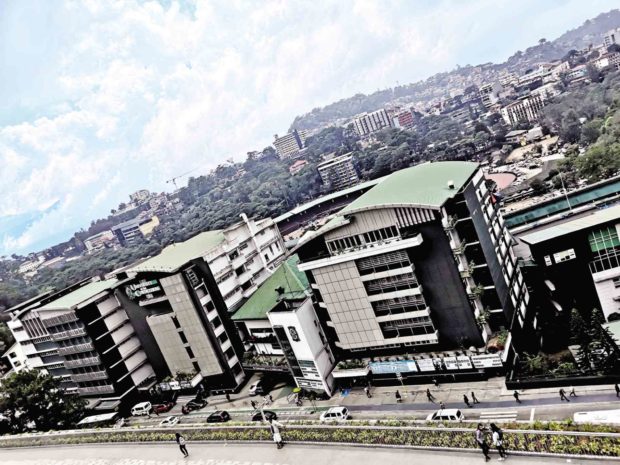Students dominate city population
The summer capital continues to be the leading educational center in northern Luzon. Students from all over the country flock to the city for its climate, an environment conducive to learning, and its top-performing schools.

EDUCATION CENTER The University of the Cordilleras (top) and the University of the Philippines Baguio are among the universities and colleges that have been attracting students to Baguio, considered as the educational center of northern Luzon. —PHOTOS BY EV ESPIRITU
Public education here began after the establishment of Teachers’ Camp in 1908 and the missionary work of the Congregatio Immaculati Cordis Mariae (CICM, or the Congregation of the Immaculate Heart of Mary), which founded the Saint Louis University (SLU) in 1911.
The city began to see the influx of students from other provinces after World War II that drastically increased its population.
The booming education sector, however, means the need for more space to accommodate students.
In 2018, 155,225 students were enrolled in city schools, including 22 tertiary education institutions.
SLU, the biggest school with 30,000 students from elementary to college, recognizes its sizeable student population. In 2010, it opened a building 7 kilometers from its main campus, near the central business district.
The building at Barangay Bakakeng for the School of Accountancy and Business Management was seen to help relieve overcrowding on the main campus, said Cynthia Posadas, dean of SLU’s School of Engineering and Architecture.
Decongesting downtown
“That’s also one way for SLU to decongest the central business district so we transferred some of our programs to Bakakeng,” she said.
SLU has the biggest number of college students in northern Luzon at 19,779, according to the Commission on Higher Education’s Statistical Data of 2019.
The University of the Philippines Baguio tried to relocate its campus to Tuba town, Benguet province, in the late 1990s but was unsuccessful.
To help solve the overcrowding and traffic woes in Baguio, SLU’s engineering department has been sharing its studies related to the carrying capacity of the city with the local tourism office.
Some faculty members have also been consulting with the city government on programs related to urban development.
However, SLU cannot stop the influx of students willing to enroll in the city, Posadas said.
“We can only indirectly help by streamlining and setting up quotas for our programs. For example, we only accept 400 nursing students out of a thousand applicants,” she said.
